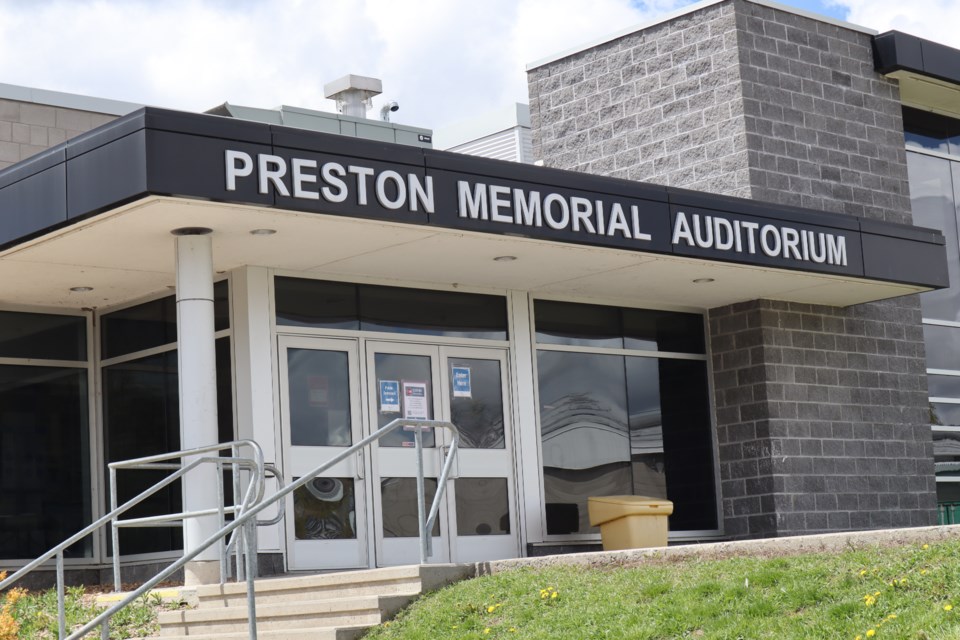Cambridge will need to take on close to $120 million in additional debt to finance several major capital projects that have ballooned in scope and cost over the last few years and will force council to take a hard second look at its priorities as budget deliberations get underway.
The projects creating the biggest challenges for the city’s finance department include the construction of the south-end recreation complex, a major addition to the Preston Memorial Auditorium, the Fountain Street soccer complex and the reconstruction of the Riverside Dam.
The budget for each has increased to a point where they “collectively are becoming unaffordable and will result in significant tax increase to pay off the debt that’s required to finance each,” warned deputy city manager Dave Bush during a special "workshop" meeting of council on Tuesday.
Bush said the city needs to better manage the scope and community expectations for each project to create a balance that’s affordable as council considers the 2022 budget and capital budget forecasts in the coming weeks.
“Overall this is simply managing wants, needs and expectations,” he said.
As an example of how far some of the city’s projects have spiraled out of control, the city’s chief financial officer Sheryl Ayres said the yet-to-be-approved Preston Auditorium addition started out in the 2019 capital forecast as a $1.6 million project.
Additions to its scope over the last few years, including the addition of an NHL size ice pad, have pushed the cost of the project to $18.3 million in 2022.
Changes to the project have also come quickly, and haven’t given staff the necessary time to plan how to pay for the additions.
“Many of the city’s reserves are underfunded and therefore we can’t fund the increase from other sources,” said Ayres.
Proceeding with the project now, rather than waiting until the city can afford it, will mean 96 per cent of its cost would have to be funded from borrowed money.
The Riverside Dam project ballooned from $5.4 million in 2019 to $15.2 million in 2022, due mainly to provincial requirements that arose through an environmental assessment.
And the recently approved Fountain Street Soccer Complex grew from a projected cost of $6.2 million in 2019 to over $13 million in the current budget.
Raising the city’s overall debt load to accommodate the projects would place the city’s total debt at $217 million, up from its current $45.7 million in issued debt and $52.2 million in approved debt, said Ayres.
It would result in a per-capita debt burden of about $1,100 for each Cambridge resident, placing the city highest for per capita debt among comparable Ontario municipalities.
The average debt per capita among lower tier municipalities across the province is around $350.
Ayres outlined how the $217 million would be repaid, with $79.3 million scheduled to be repaid from tax supported operations, $97.5 million expected to be repaid from future development charges, and $40.2 million repaid from water and wastewater operations.
She reminded councillors that if there was an economic downturn and development charges were insufficient to cover the debt repayment, the tax base would have to make up for it.
The CFO said the other factor council needs to consider is the repayment limit established to reduce the city’s exposure to financial risk and ensure compliance with statutory requirements.
Under the Municipal Act, municipalities are allowed to issue debt to fund the development or redevelopment of capital infrastructure, but the province places limits on that debt to protect creditors and ensure it can be repaid.
The annual repayment limit represents the maximum amount of property taxes and other revenues the municipality can commit annually to its debt payments and other long-term financial obligations.
That limit is calculated based on 25 per cent of the city’s annual revenues.
Following best practices, the city established its own policy that places further reductions on its repayment limit, setting it at 10 per cent of its revenues and 15 per cent for water and wastewater, which typically results in more capital projects.
In 2021, the annual repayment limit for Cambridge was only 3 per cent, demonstrating the city has significant financial resources to repay any outstanding debt obligations, said Ayres.
To put it in perspective, Ayres explained that if the city’s debt payments were 25 per cent of own-source revenues, it would have annual interest payments of $31 million compared to its actual 2021 payments of $4.1 million.
In calculating the city’s annual repayment limit, debt attributed to future development charges is combined with the tax supported debt which helps to minimize risk in the event there’s a downturn in the economy.
If revenues collected from DCs are not enough to meet the debt payment, then they have to be paid from tax supported funds, Ayres said.
Taking on $217 million in debt would result in a repayment limit that would rise to a peak of about 9.6 per cent by 2026.
That would place Cambridge second highest in the province for cities of its size, and only lower than St. Catharines, which had a 2019 tax debt repayment limit approaching 12 per cent.
The average is 3.5 per cent for lower tier Ontario municipalities with populations over 100,000.
Ayres said other municipalities in Waterloo region are forecasting decreases in outstanding debt.
Incremental increases in the tax levy just to repay the debt would begin at .33 per cent next year and top out at 3.88 per cent by 2026.



